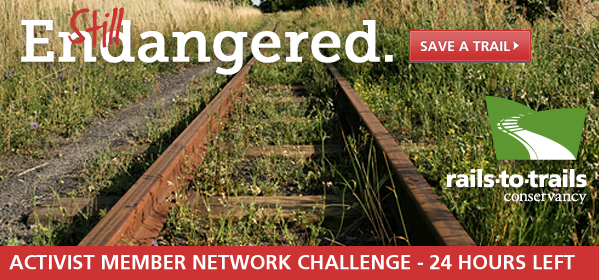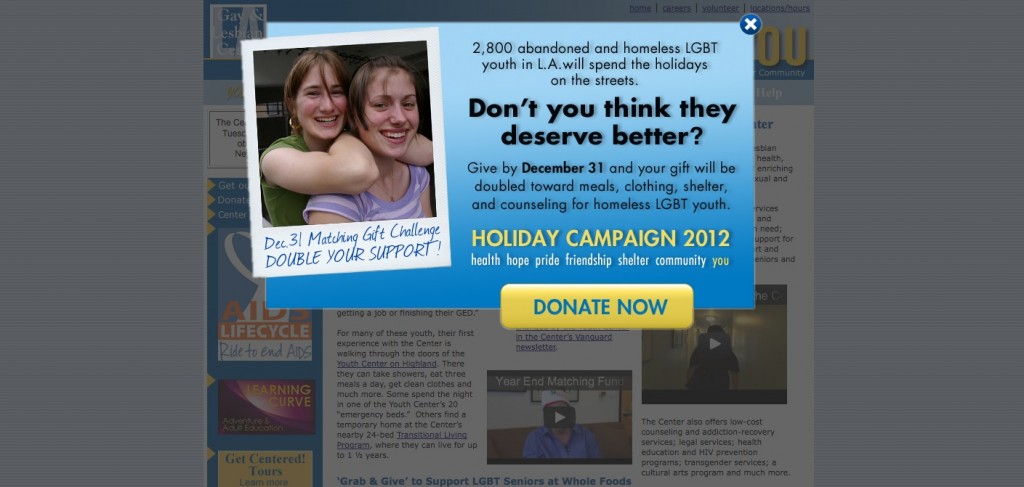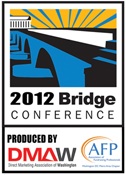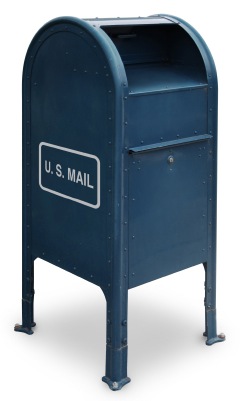With online giving continuing to grow at a faster pace than giving overall according to the Blackbaud Index, it’s more important than ever for nonprofits to get serious about their online communications and fundraising strategies. And with one-third of online revenue being tracked to email according to the organizations represented in the newly released 2013 eNonprofit Benchmarks Study, it’s absolutely essential for nonprofits to develop and sharpen their email strategies. Whether you’re just getting started or want to build on an established program, here are ten best practices in email fundraising that can help you improve your results right away:
1. Use deadlines. Deadlines and goals are very effective motivators for giving in general, and particularly in email fundraising. In the same way that public radio fundraising thrives on goals and the ability to convey on-the-air updates on those goals, email fundraising permits regular updates with increasing urgency and reminders that can be uniquely motivating to constituents.
2. Use NEAR-TERM deadlines. Email is the fruit fly of direct response fundraising. Everything is short-lived. While a direct mail appeal may continue to return over 6+ weeks, email drives giving for only about 24 hours. In the same vein, next to giving on the first day a deadline is announced via email, most donors will elect to give on the final day, even in the final hours, before a deadline when they are reminded via email. Thirty days is an eternity in email fundraising. Generally, you should plan to set deadlines for email campaigns in the 10- to 15-day range, and make sure you send at least one reminder on the final day of the campaign, if not several as the clock runs out.
3. Think multi-notice campaigns. No matter how great your emails are, an individual email message may generate a response rate that’s 10-20 times lower than a direct mail effort. Email fundraising works best when a campaign goal/message is conveyed through multiple email messages under a unified campaign umbrella over a concentrated period of time. Much like a direct mail membership renewal series, multi-part email campaigns make the case for support for a single theme or purpose via multiple varied messages and reminders. A single email fundraising campaign, for example, may be comprised of 3-10+ email messages depending on the time of year and the organization’s email communications program.
4. Don’t ask for money every time you email. In fact, don’t even consider launching an email fundraising program until you have a solid email communications program in place. Capture your constituents’ hearts and engage their brains with a steady stream of informative communications that share your organization’s issues and work BEFORE you ask. As a rule of thumb, for every one fundraising email you send, you should be sending at least three varied, program-related communications as part of a larger communications plan and strategy. Think trust and interest first; giving second.
5. A.B.T. (Always Be Testing). Email is incredibly fickle. A format or subject line style that works one month can’t necessarily be successfully replicated the next. “Hey,” may have been the breakout subject line for the Obama campaign this past fall, but that didn’t mean they could go out a week later with something like “Whoa” (hypothetically) and necessarily expect the same success. You can’t be sure of much in email – but fortunately you can test the waters easily. Always plan to test at least two (and usually more) elements of each email (subject line, header, callout box, sender, graphics, layout, etc.) among a small subset of your file, then roll out with the best email to the rest of the file once you have enough returns to pick a winner, usually in a couple of hours.
6. When it comes to subject lines, think personal and pithy (for now). Back to #5, what’s true today may not be true tomorrow, so testing is essential. But that said, colloquial, indirect subject lines generally command the strongest open rates and often the most revenue. For example, in head-to-head testing, a stiff subject line with leading caps such as “Campaign Deadline Tonight” will almost always lose to a simpler, more casual subject line approach such as “6 hours left.”
7. Write emails worth reading. Realize that yours are among many messages interrupting your constituents’ lives every time you email. Not just on their desktops at work or laptops at home, but also – even more intrusively – in their pockets when they’re out to dinner with friends, on the playground with their kids, out shopping for groceries, and so on. That’s not a reason to email less though. It’s a reason to make each and every email worth reading and relevant.
8. Segment your audiences. To be relevant (N.B. #7), make sure you are able to segment your email audiences – at a minimum – by 1) state, city or region, 2) past email responses (opens, clicks, actions taken), and 3) giving (donor vs. non-donor). For example, if there are legislative/policy issues meaningful to your organization that are taking place in a specific state, you should be able to talk to your constituents in that state about those issues. Or at times you may want to tightly target messages that ask constituents to take action to those who have already taken action. And you certainly want to be able to adapt your messaging appropriately for donors vs. not-yet-donors. Your ability (or not) to segment your audience and tailor your messages accordingly has a direct effect on your fundraising potential.
9. Register, subscribe and give. One of the best ways to get email ideas is to get a lot of emails. Sign up for organizations’ email lists for inspiration and ideas – and be sure to convey your thanks and recognize their work by giving when you can.
10. Send emails, not “e-blasts.” I’ll never forget attending a copywriting workshop many years ago in which the direct mail fundraising pioneer Kay Lautman urged us to elevate the medium and not think of our work as “direct mail” but instead think of it as “writing letters.” Her point was that letters are real, considerate communications rooted in respect and trust between the sender and the reader – and that’s the way you should approach any letter, whether it’s to 1 person or 100,000. Direct mail, if you think of it as merely that, is junk. The same holds true with email. “E-blasts” are the junk mail of today – and is that really what you want to send to your very important donors and constituents? Besides, donors respond better to emails that are personal, carefully considered, and stem from a real foundation of trust and respect.
So, do you have any tips to add? I hope you’ll share them in the comments section below! And if you’re not in Minneapolis for the Nonprofit Technology Conference which kicks off Thursday April 11, you can still sign up to attend online and follow #13NTC on Twitter for great insights on online giving and digital donor communications.




















